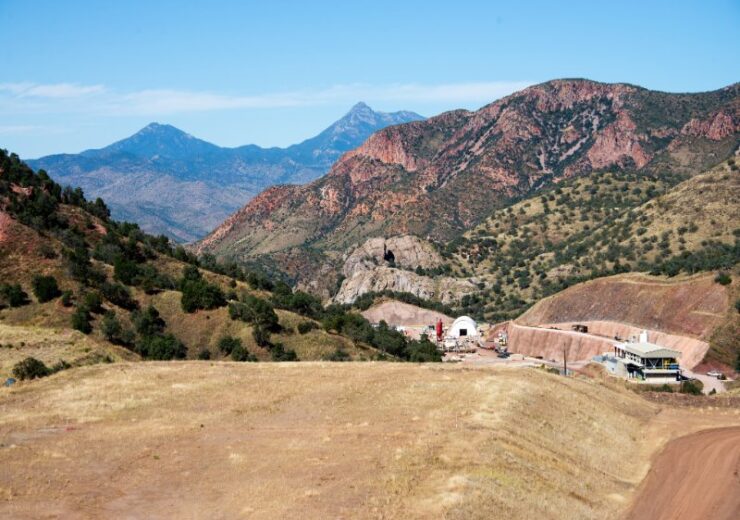The Group's FY23 financial statements will reflect a non-cash impairment expense of around $1.3bn specifically related to Hermosa project’s Taylor deposit

Hermosa project site. (Credit: SOUTH32)
Mining company South32 is set to recognise a non-cash impairment expense for the Hermosa project in the company’s FY23 financial results. This comes as the company has undertaken a review of its assets in accordance with the group’s accounting policies and the relevant accounting standards.
The Hermosa project in US comprises Taylor zinc-lead-silver and Clark battery-grade manganese deposits.
Recent study work has verified the feasibility of developing the two deposits independently, presenting the potential for multiple long-term operations in critical minerals.
Due to this development, South32 is now obliged to assess the Taylor deposit, Clark deposit, and regional exploration land package separately for accounting purposes.
As a result of this assessment, the Group’s FY23 financial statements will reflect a non-cash impairment expense of approximately $1.3bn specifically related to the Taylor deposit.
This impairment expense will be excluded from FY23 Underlying earnings, as per our accounting policies.
After considering the impairment expense, the carrying value of the Hermosa project as of June 2023, will be approximately $1.001bn. Out of this, the Taylor deposit will have a carrying value of around $482m. On the other hand, the carrying value of the Clark deposit and regional exploration land package will remain unchanged at approximately $519m.
Since acquiring the Hermosa project in August 2018, the value of the Taylor deposit has been adversely affected by Covid-19 restrictions, dewatering requirements and higher pre-production capital expenditure.
South32 CEO Graham Kerr said: “The Hermosa project has the potential to sustainably produce commodities critical for a low-carbon future, from multiple development options, for decades to come.
“We are disappointed by the delays resulting from the impact of Covid, the significant dewatering requirements and current inflationary market conditions.
“We continue to see substantial opportunity to unlock additional value across Taylor, Clark and our highly prospective regional exploration package and that optionality is not included in today’s impairment assessment.”
As of now, the feasibility study for the Taylor deposit is progressing as planned and is expected to be completed in the first half of FY24. Additional engineering work is being undertaken to ensure the alignment of the mine development schedule for a federal permitting process under FAST-41 regulations. Moreover, current market cost estimates are being incorporated to make the study more comprehensive and accurate.
The feasibility study conducted thus far has confirmed the potential of establishing a highly productive zinc-lead-silver underground mine and a conventional processing plant. The processing plant is expected to have a nameplate capacity of up to 4.3 million tonnes per annum, which is a significant processing rate.
Recently, an updated Mineral Resource estimate for the Taylor deposit was released, revealing a total estimate of 153 million tonnes, with an average composition of 3.53% zinc, 3.83% lead, and 77g/t silver. This updated resource estimate provides strong support for the ongoing feasibility study work. Notably, the Measured Mineral Resource has seen a substantial 41% increase.
